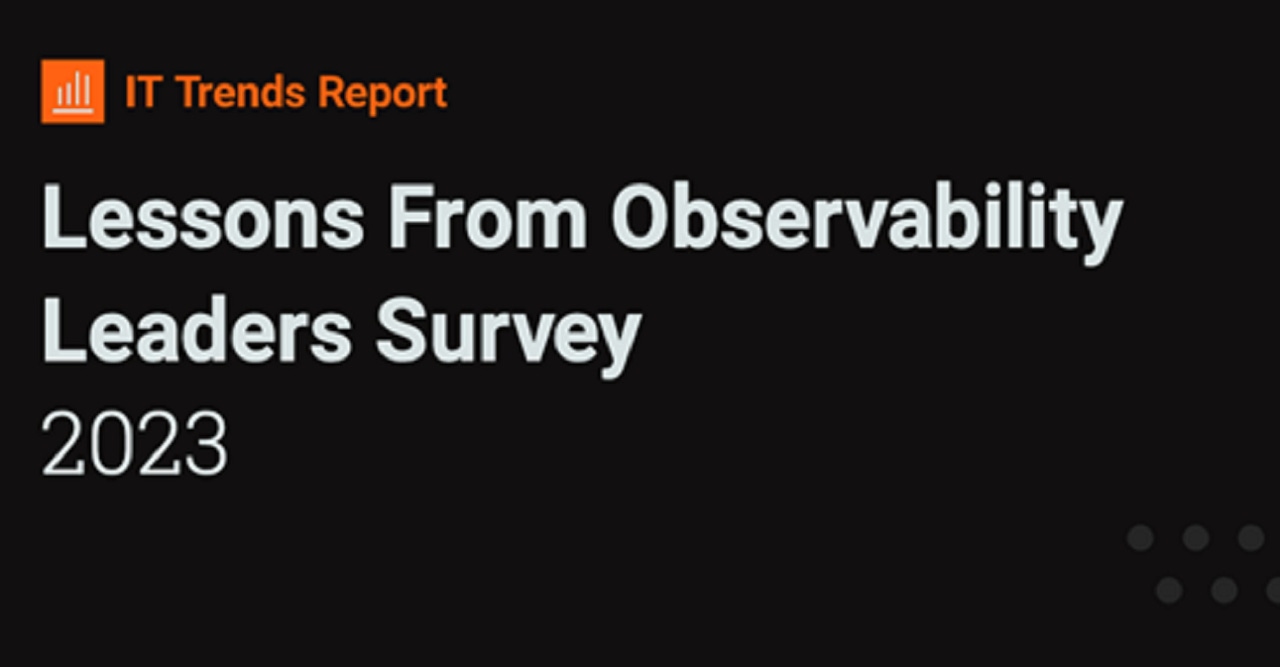SolarWinds IT Trends Report Reveals Observability Advancing AutomationSolarWinds IT Trends Report Reveals Observability Advancing Automation
There is a direct connection between observability and automation that helps improve IT operations, according to SolarWinds.

A new report from SolarWinds explores how enterprises can maximize the value of observability solutions to achieve better operational efficiency and business outcomes.
The 2023 IT Trends Report:Lessons From Observability Leaders provides guidance on best practices for implementing observability tools. The report, which coincides with the upcoming IT Pro Day on Sept. 19, highlights the divide between companies embracing observability versus those that haven't yet adopted it.
Observability detects anomalies before they become outages. It also pinpoints root causes to prevent recurrences. According to the report, observability leaders automate more monitoring, detection, and resolution, and as a result they excel at operational efficiency and auto-remediation.
The report reveals that leading organizations commonly follow the following trends:
Investing in top priorities: Organizations are using observability solutions to improve their customer experience, enable faster innovation, reduce time spent solving and detecting issues, and increase operational efficiency.
More automated and integrated: Leaders in the field of observability who are adopting automation and investing in efficiency-enhancing tools are 214% more likely to report stellar performance in operational efficiency.
Ahead on IT: The data reveals that leaders in observability are also significantly outperforming in monitoring, detecting, and resolving potential business-stalling issues.
While observability has been a significant buzzword in the industry over the past two years, adoption hasn't quite yet followed the hype.
"The survey results reveal a full 100% of the technology professionals surveyed are engaging with observability in some form," Jeff Stewart, field CTO at SolarWinds, told ITPro Today. "Yet, only 1% of their organizations have moved past the research and piloting stage and have fully implemented observability tools."
Understanding How to Combine Observability with Automation
With just basic monitoring in place, Stewart said ITOps and DevOps teams have traditionally lacked full visibility across the performance and health of their applications and database environments.
"Observability goes a step beyond monitoring, using cross-domain data correlation, machine learning, and AIOps to provide actionable business insights needed to identify and remediate issues in real time," he said.
According to Stewart, combining observability with automation provides organizations with the unique ability to improve their operational efficiency, detect and respond to issues faster, and enhance overall system reliability.

Stewart-SolarWinds
In addition, observability can bring organizations one step closer to autonomous operations, where IT systems can govern themselves and have the ability to adopt a proactive, rather than reactive, approach to managing their digital ecosystems, he noted.
How to Avoid Potential Observability Pitfalls and Challenges
In approaching observability, Stewart said it is essential to adopt a strategic perspective and consider various factors, including:
Understand your business objectives. Align observability efforts with the overarching goals of your organization. Determine how observability can contribute to achieving those objectives, such as improving customer satisfaction, increasing revenue, and reducing costs.
Make sure your observability solutions support hybrid and multicloud environments. While hybrid and multicloud environments can add many benefits, they can also be challenging to manage for IT teams. Although there is no one-size-fits-all solution for cloud migration, careful planning and a purposeful approach to how, what, and when you move to the cloud can save a lot of headaches down the line.
Don't ignore the database. Databases represent the most difficult ecosystems to observe, tune, manage, and scale. Tasks crucial to the health and functionality of your business —including troubleshooting, root cause analysis, and remediation — simply cannot happen without full, transparent observability across the numerous resources a database needs to engage to do its job.
"Observability tools have emerged as a solution for achieving optimal performance, compliance, and resilience in digital environments while increasing your overall DevOps agility, efficiency, and speed to market," Stewart said. "In a nutshell, observability is more than simply ensuring applications remain operational; it's about enabling teams to become an innovation powerhouse."
About the Author
You May Also Like








.jpg?width=700&auto=webp&quality=80&disable=upscale)
